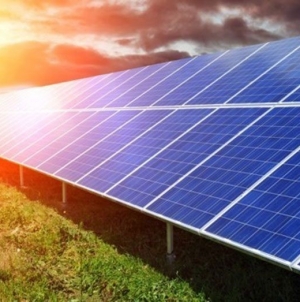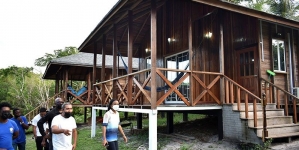Guyana remains in the dark about proportion of oil to gas in Stabroek Block
ExxonMobil’s public disclosures on the hydrocarbon reserves, which it has discovered in the Stabroek Block say that the country’s recoverable resource is estimated to be more than six billion oil-equivalent barrels.
Someone used to the industry would know that that language means that six billion barrels of oil equivalent (boe) means oil as well as natural gas. Yet, to Guyanese who are a little less informed, the language could be misleading.
And it has been. In their attempts to determine the value of Guyana’s Stabroek Block reserves and subsequently, the portion of the wealth that will accrue to Guyana, persons have assumed that all six billion barrels are of oil.
This assumption is problematic on a few fronts. First, it would lead persons, in their projections, to unknowingly inflate the value of the oil in the reserves, thereby giving Guyanese the wrong impression about how much wealth they’ll benefit from.
Second, not all the recoverable natural gas is likely to be sold. Government has already disclosed plans to bring gas from the Liza Phase one project to shore, for electricity purposes. Some of the gas would be re-injected to maintain pressure sufficient for the extraction of the light, sweet oil.
Even then, the proportion of gas to oil is likely not minimal. ExxonMobil’s 11th discovery called Haimara, made in early 2019, is a gas condensate reservoir, according to a 2019 technical report from the International Monetary Fund (IMF).
That means it is almost entirely natural gas, opening up a new area for development.
It is unclear whether the Government is aware of that and other details about more recent discoveries.
Minister of Public Infrastructure, David Patterson, had appeared on a Kaieteur Radio show, Guyana’s Oil & You, almost two weeks ago, and told the listening public that he is aware of the gas content in Liza Phases One and Two. That accounts for just two of 15 discoveries. Both of those discoveries were made years ago.
If Government is only aware of the gas content in two discoveries, it means that Guyana’s development partners like the IMF are privy to more information about the country’s reserves than its own Government.
It also gives those organisations what they need to make analyses of Guyana’s reserves, but not its own people.
Guyana’s ability to determine its economic might and the wellbeing of its people in the decades to come depends heavily on fair and transparent public disclosures to the countrymen who are instrumental in the process.
Whether this will improve in the future is unclear. Kaieteur News, in posing questions to ExxonMobil’s local subsidiary, Esso Exploration and Production Guyana Limited (EEPGL), about the contents of its 15 material discoveries, was told on several occasions last year that it was still analysing the contents of its discoveries.
While this may lead to the assumption that it takes years to make such analyses, Suriname took days to receive a report on the disaggregation of the oil and gas content in a discovery made offshore the Dutch-speaking country by Total and Apache earlier this month.
Kaieteur News has also made efforts to determine whether independent analyses could be executed, but the release of the oil company’s well logs to private citizens is not probable.
Officials from ExxonMobil as well as the Government are clinging to confidentiality agreements, which dictate that the logs are “proprietary”.
Guyana continues to remain in the dark about the proportion of oil to gas in its own reserves.






















